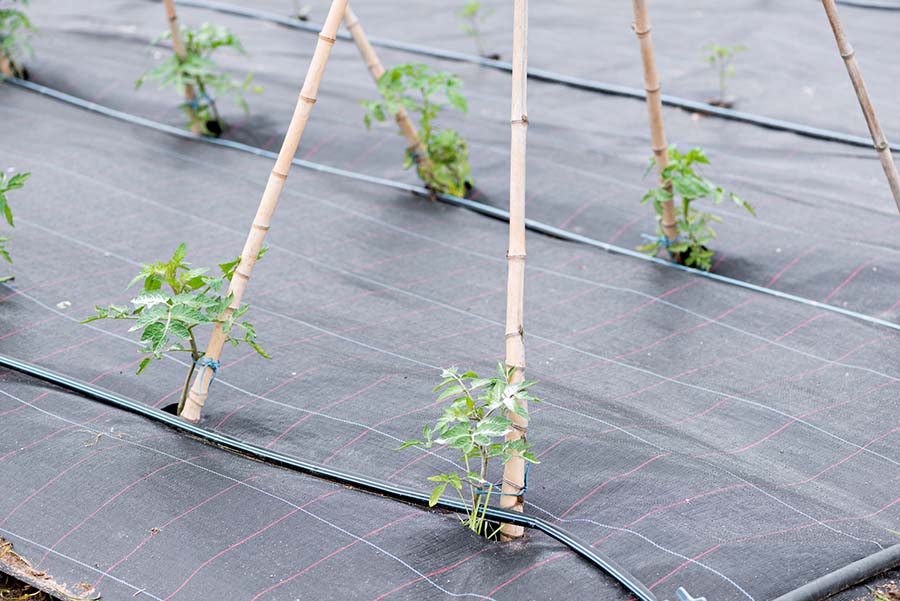The Rise of Precision Water Management in Modern Farming
Effective water management has always been a goal in commercial agriculture, but in recent years, it has moved front and center as a critical operational goal. Water is still essential for crop growth, but it’s also a significant operational cost and a resource facing increasing pressures from variable weather patterns, increasing regional demand, and sometimes regulatory limits. This means that simply applying water to crops isn’t enough; the focus has decisively shifted toward precision.
Precision water management means delivering the right amount of water to the right place at the right time and with minimal waste. Reduced water consumption is a key benefit, but this approach also directly optimizes plant health and can maximize crop yields by improving nutrient uptake. Precision management means nothing is wasted because every drop fulfills a specific need. This approach reduces pumping costs, limits nutrient leaching, and ensures crops get precisely what they need when they need it.
This level of precision often requires a combination of smart irrigation technologies, careful monitoring, and tools to help manage soil moisture effectively at the root zone. Materials like slit film woven geotextiles offer compelling possibilities, providing farmers with an additional means to control and optimize the water dynamics within their fields.
Slit Films for Reduced Evaporation & Enhanced Soil Moisture Retention
Farmers know that their crops need consistent access to adequate soil moisture to grow and produce at their peak. However, nature often appears to work against this goal, especially in many commercial farming environments. One major challenge in maintaining optimal soil moisture is water loss through direct evaporation from the soil surface. This is especially true in warm, sunny, or windy conditions. Used as ground cloth, slit film woven geotextiles are a straightforward and effective means to significantly curb this evaporation. They function by creating a protective covering that limits direct interaction between the soil and the atmosphere.
Used as a cover, the fabric directly shields the soil from the sun’s heat and reduces the impact of wind, both of which accelerate evaporation. Research on various fabric ground covers has demonstrated their capacity to substantially increase soil moisture content compared to bare ground – in some studies, by as much as 70%. While slit film woven geotextiles are permeable to allow necessary air and water exchange, their tightly woven structure of flat tapes limits the rate at which water vapor can escape from the soil surface. This means more irrigation water or rainfall stays in the soil profile, where plant roots can access it.
The practical benefits for your operation are clear:
- Enhanced soil moisture retention means water remains available to your crops longer following irrigation or rain.
- Minimizing the need for supplemental watering saves on water and energy costs associated with pumping.
- A more stable soil moisture environment helps reduce plant stress, particularly during dry spells, promoting healthier growth and more consistent yields.
By tackling evaporation head-on, slit film woven geotextiles play a key role in making every drop of water more effective.
Synergies with Drip Irrigation & Other Precision Systems
The benefits of slit film woven geotextiles become even more apparent when they are integrated with precision irrigation methods, particularly drip systems. This combination supports a highly targeted and efficient approach to water delivery and retention.
When drip irrigation delivers water directly to the base of plants or along crop rows, a slit film woven geotextile on the soil surface ensures the water is retained and used for maximum effect. First, by significantly reducing evaporation, the ground cover ensures that a much higher percentage of the applied water remains in the soil and is available for root uptake. Second, geotextiles can help manage how water is distributed. Its controlled permeability encourages water to spread evenly within the desired root zone beneath the fabric rather than percolating straight down or flowing away on the surface before it reaches the soil. When the water spreads evenly in the target zone, moisture is available right where the plants need it.
Using slit film wovens in conjunction with drip systems also helps maintain cleaner field conditions. The fabric suppresses weed growth around drip emitters and lines, eliminating competition for water and nutrients. For surface-laid drip lines, the geotextile can also offer a degree of protection from physical damage or displacement. While careful planning is needed for plant placement and creating openings in the fabric, the synergy between the targeted water delivery of drip systems and the moisture-conserving, weed-suppressing properties of slit film woven geotextiles results in an exceptionally efficient water management strategy.
Improving Water Use Efficiency (WUE)
In today’s agriculture, success is less about how much water you provide and more about how effectively every gallon supports your crop’s growth and yield. This is the core idea behind Water Use Efficiency, or WUE. Simply put, WUE is a measure of your crop’s productivity relative to the amount of water used – essentially, getting more “crop per drop.” Improving WUE is a key target for profitable and sustainable farming, especially where water is a costly or limited resource.
Slit film woven geotextiles enhance WUE in several ways:
- By minimizing evaporative losses from the soil surface, they ensure that applied water remains in the root zone available for plant uptake and transpiration – the productive uses of water.
- By helping to maintain consistent soil moisture and working synergistically with precision systems like drip irrigation, they help ensure that water is not only present but also used more effectively by the plants when and where they need it.
In fact, research on ground cover systems, including different types of woven geotextiles, has consistently demonstrated their potential to boost crop WUE. For instance, studies have indicated improvements of over 40% for crops like tomatoes and even more substantial gains for others by optimizing water availability and minimizing non-beneficial losses.
Let’s consider the practical implications of improving your WUE (in terms of getting “more crop per drop”). Higher WUE means you’ll need less water to achieve crop production goals, which correlates to lower pumping costs and less strain on water sources. In water-scarce regions or during droughts, a high WUE can even make the difference between significant losses and a successful harvest.
What’s Next?
With water efficiency now effectively addressed, it’s time to tackle another relentless challenge impacting your farm’s productivity and bottom line: weeds. Our next chapter digs into how slit film woven geotextiles also offer a powerful, long-term defense against unwanted vegetation.




